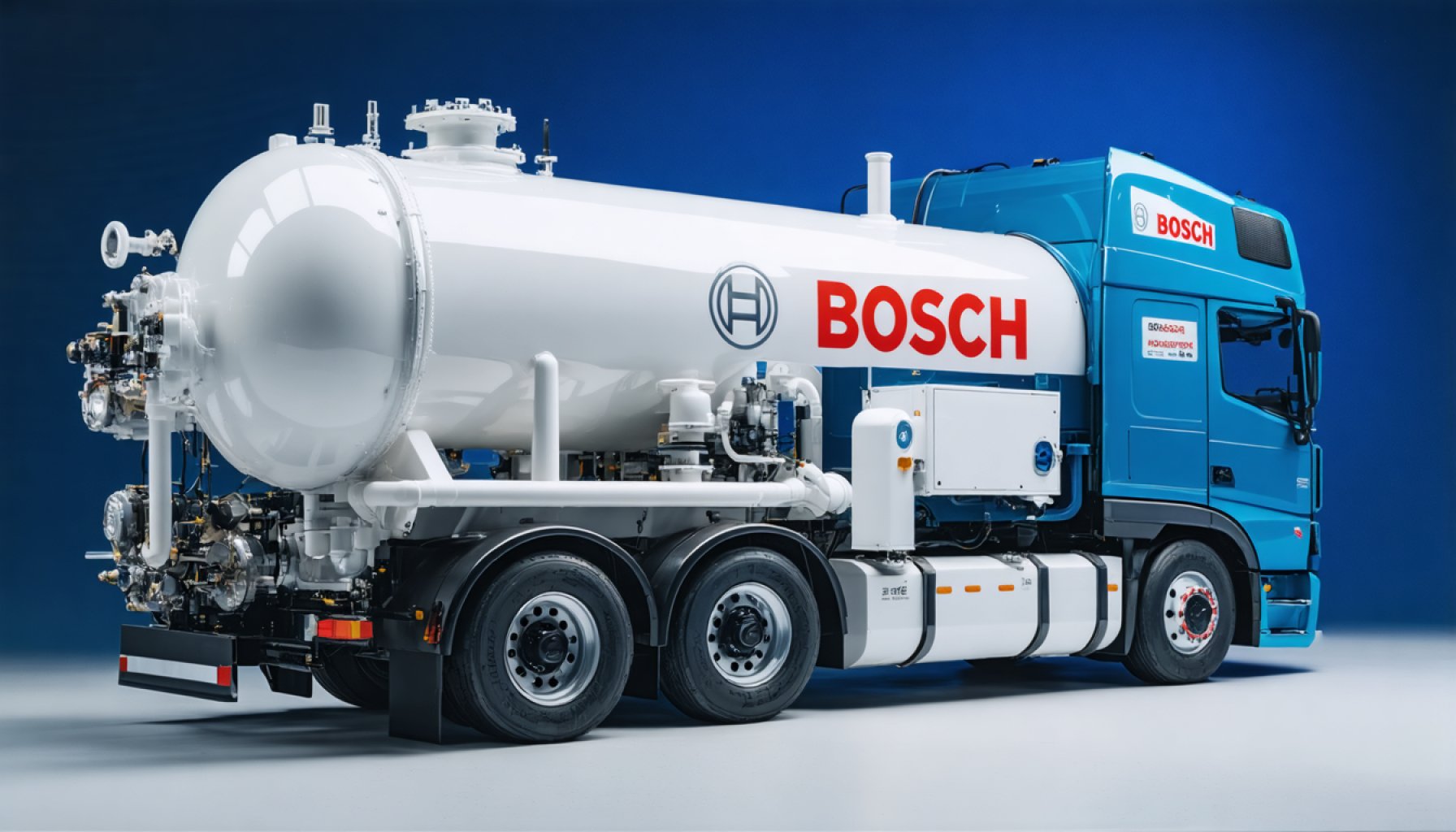- Bosch shifts focus from solid-oxide fuel-cell technology to hydrogen production.
- The company targets the growing PEM electrolysis sector, anticipating a thriving hydrogen market by 2030.
- Global demand for green hydrogen rises, driven by sectors like heavy transport seeking sustainable solutions.
- Bosch ends its partnership with Ceres Power, opening new investment opportunities for the latter.
- The shift highlights Europe’s slow policy adoption concerning hydrogen as an energy conversion tool.
- Bosch calls for accelerated policy change, especially in energy-leading Germany, to keep pace with technological advances.
- The company aims for economic and environmental gains, encouraging industries and governments to dismantle barriers to hydrogen adoption.
Gears turn in Bosch’s strategy as the global engineering titan embraces the vibrant promise of hydrogen. The company drops its pursuit of solid-oxide fuel-cell technology, acknowledging the tepid market reception, and instead embarks on a bold journey into hydrogen production. With a laser focus on proton-exchange membrane (PEM) electrolysis, Bosch positions itself to become a powerhouse in the thriving multi-billion euro hydrogen market anticipated by 2030.
The world gallops towards a cleaner energy future, and Bosch paces at the forefront. Its new chapter aligns with governments worldwide investing in hydrogen to cut carbon footprints. From bustling global metropolises to industrial giants, the demand for green hydrogen escalates, especially in sectors hungry for sustainable solutions like heavy transport. PEM electrolysis emerges as a star player, methodically pulling hydrogen and oxygen apart using renewable electricity—an approach that blends seamlessly with existing infrastructure.
Exiting its partnership with Ceres Power, Bosch fortifies its repositioning, no longer tethered to what it deems commercially unviable solid-oxide systems. While this separation might jolt Ceres Power by removing a critical ally, it opens the door to investors eager to mobilize behind Ceres’ independent path forward.
Yet, Bosch’s evolution critiques more than just market winds. Europe’s delayed embrace of hydrogen as an energy conversion tool spurs Bosch’s pivot, spotlighting gaps where policy lags behind technological stride. Particularly within Germany, renowned for its energy leadership, Bosch calls for accelerated policy adoption, mirroring its own swift strategic adaptation.
With eyes fixed on a hydrogen-driven horizon, Bosch marches toward a future promising both economic gain and green transformation, urging policymakers to join the momentum. As they dismantle barriers, industries follow suit, sculpting a fuel landscape ready for the challenges—and triumphs—ahead.
The Hydrogen Revolution: What You Need to Know About Bosch’s New Direction
How-To Steps & Life Hacks: Embracing Hydrogen Technology
1. Understand PEM Electrolysis: Proton-exchange membrane electrolysis is a process that uses renewable electricity to split water into hydrogen and oxygen. For those invested in clean energy technologies, it’s essential to grasp the basic operation and potential applications of PEM systems.
2. Invest in Infrastructure: Like Bosch, companies and individuals can future-proof themselves by considering investments in hydrogen-compatible infrastructure, such as refueling stations or storage solutions.
3. Energy Audits: Regularly audit energy consumption and explore shifting part of your energy mix to green sources, including hydrogen, to reduce carbon footprints.
Real-World Use Cases
– Heavy Transport: Hydrogen, particularly green hydrogen produced via PEM electrolysis, is pivotal for decarbonizing heavy industries and freight transportation where battery technology falls short.
– Industrial Applications: Industries such as steel and chemical production can significantly cut emissions by switching from fossil fuels to hydrogen.
Market Forecasts & Industry Trends
The hydrogen market is poised for rapid expansion, potentially reaching a valuation in the multi-billion euro range by 2030. Governments worldwide are actively funding hydrogen projects, underlining its importance in future energy strategies. Companies like Bosch are expected to play a key role in this development.
Reviews & Comparisons
PEM electrolysis is increasingly favored over solid-oxide fuel cells due to its compatibility with renewable energy and ease of integration. Unlike Bosch’s past focus on solid-oxide systems, PEM’s flexibility and scalability cater more effectively to rapid changes in market demand.
Controversies & Limitations
The transition to hydrogen is not without challenges. The high upfront costs and energy required for green hydrogen production remain barriers. Additionally, infrastructure for hydrogen distribution is still underdeveloped.
Features, Specs & Pricing
Bosch has not publicly detailed specific technology specs or pricing for its upcoming hydrogen solutions, but the focus will likely be on scalable and cost-effective commercial models that appeal to industries seeking sustainability.
Security & Sustainability
Hydrogen is a volatile substance, and while Bosch aims to harness its potential, safety measures and sustainable practices are crucial. The production, storage, and distribution must meet stringent safety guidelines to mitigate risks associated with hydrogen.
Insights & Predictions
Bosch’s investment in hydrogen aligns with predictions that hydrogen will be integral to achieving global carbon neutrality. Experts argue that countries aggressively investing in hydrogen infrastructure today will lead the clean energy market tomorrow.
Tutorials & Compatibility
Bosch’s PEM electrolysis technology will likely be designed to integrate with existing renewable energy systems, such as wind and solar, providing complementary benefits to those systems.
Pros & Cons Overview
Pros:
– Offers a scalable solution to produce green hydrogen
– Aligns with global carbon reduction goals
– Positions Bosch as a leader in future energy solutions
Cons:
– High initial costs
– Requires policy support and financial incentives
– Needs developed infrastructure for full market integration
Actionable Recommendations
1. Stay Informed: Follow industry news and policy developments related to hydrogen to identify new opportunities.
2. Explore Partnerships: Businesses can collaborate with companies like Bosch to pilot hydrogen projects.
3. Consider Energy Mix: Begin transitioning to an energy mix that includes hydrogen to hedge against future market fluctuations.
For further information: Bosch
Harness the power of hydrogen now to be part of the clean energy future. Stay ahead with Bosch’s strategic pivot and redesign your energy roadmap to align with global sustainability goals.
